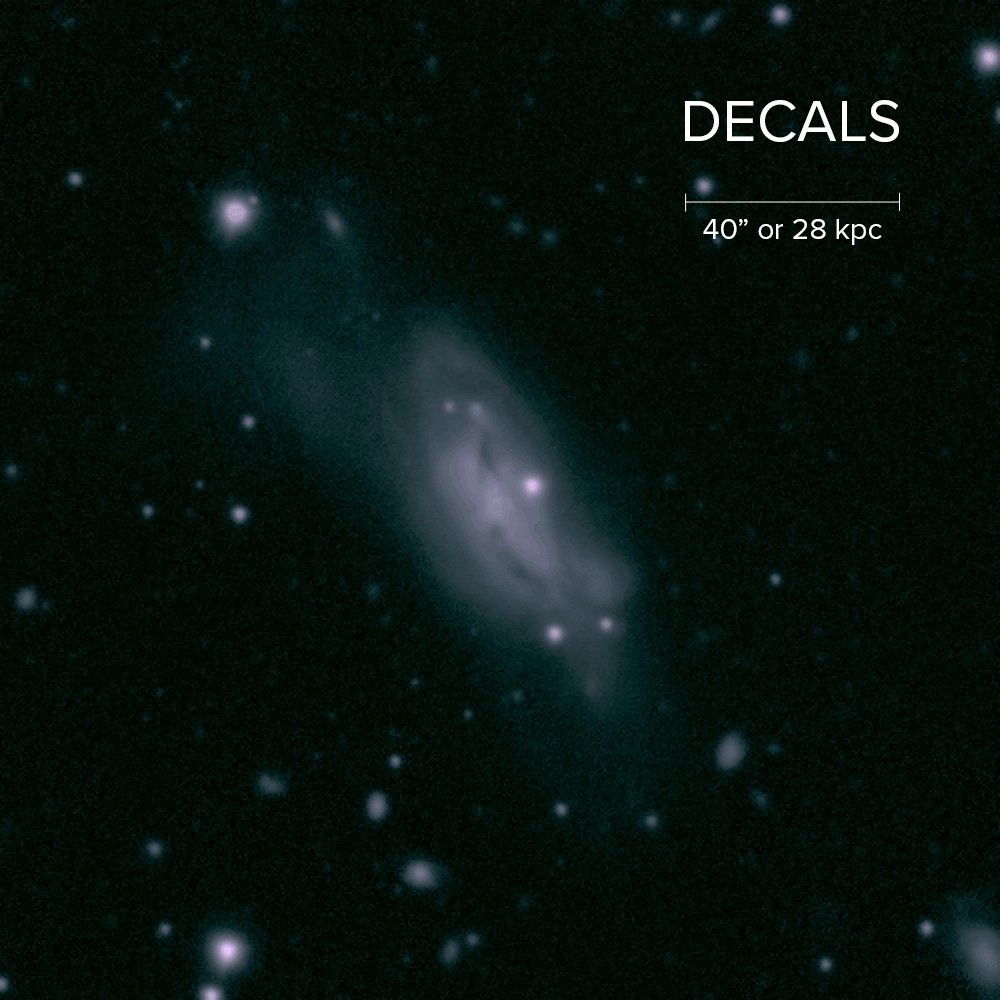Researchers studied the galaxy using the ALMA (Atacama Large Millimeter/submillimeter) telescope
UGC4211 is 500 millionlight years from Earth in the constellation Cancer. This is one of the closest examples of the final stage of the merger of several galaxies. Usually, such processes occur in the galaxies of the early Universe, which are much more difficult to observe.
 Observation of UGC4211 with various telescopes. Animation: ALMA (ESO/NAOJ/NRAO), M. Koss et al (Eureka Scientific)
Observation of UGC4211 with various telescopes. Animation: ALMA (ESO/NAOJ/NRAO), M. Koss et al (Eureka Scientific)
With highly sensitive 1.3mm receivers,mounted on ALMA, astrophysicists have peered deep into active galactic merger nuclei. These are compact, very bright regions in galaxies caused by the accretion of matter around central black holes. The researchers found that at the center of UGC4211 is not one, but two black holes, actively "absorbing" the by-products of the merger. Surprisingly, they were only 750 light-years apart.
The researchers note that since mergersgalaxies occurs regularly, probably in the Universe there are many more paired black holes located at a close distance from each other. It's just that, until now, observations of such objects have been difficult due to the large distance to the merging galaxies. This discovery is important for the detection and study of gravitational waves.
At the centers of galaxies, there can be many pairs of growingsupermassive black holes, which we still have not been able to identify. If so, then in the near future we will observe frequent gravitational wave phenomena caused by mergers of these objects throughout the universe.
Ezequiel Treister, astronomer at the Catholic University of Chile and study co-author
Read more:
The most beautiful photos of "Webb" for 2022: see what the $ 10 billion telescope did
The sun opened the year with a flash of the most powerful class
The secret of the durability of Roman concrete is revealed: it can be restored
Cover: Artistic illustration of the two black holes at the center of UGC4211. Image: ALMA (ESO/NAOJ/NRAO); M. Weiss (NRAO/AUI/NSF)